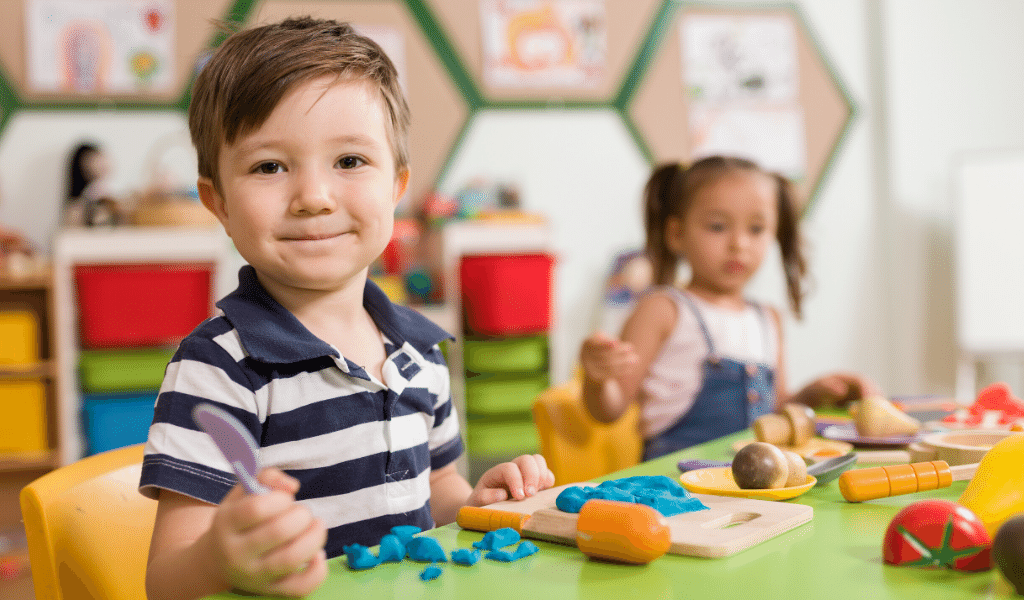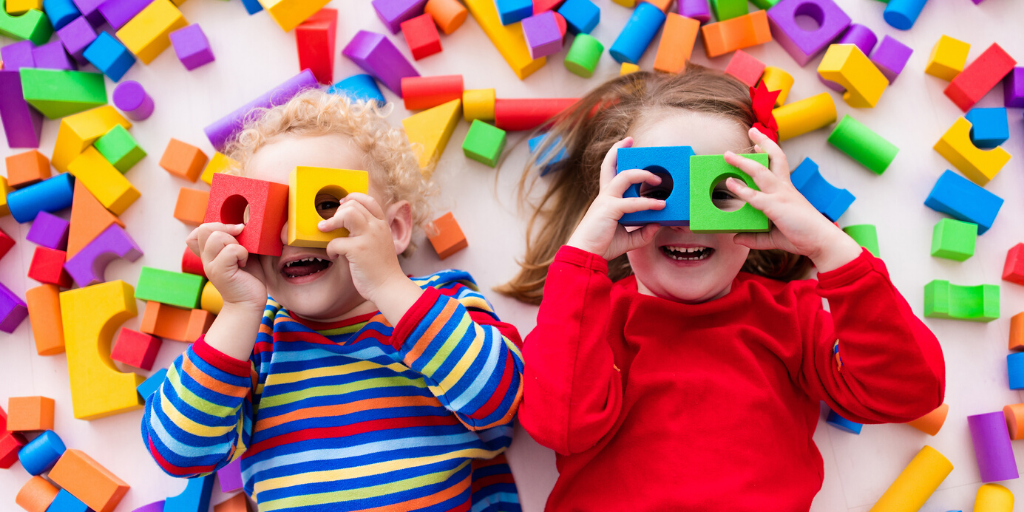Yes. The Statutory Framework for the Early Years Foundation Stage (2017) was fully updated, and the final version published in March 2021 following a trial by a selection of Early Adopter schools. It became effective in all Early Years settings from 1st September 2021.
According to the DfE, the aims of the EYFS reforms are to improve outcomes for children; strengthen their language development, particularly for children from disadvantaged backgrounds; and reduce workloads so that practitioners can spend more time with the children, supporting their learning. Change was also necessary as some elements of the document were out of date.

There are very few changes to the Safeguarding and Welfare Requirements. These mostly relate to updated links and dates, including references to legislation, such as the Data Protection Act. However, there is a new requirement to promote good oral health. In section 2, Assessment the new Reception Baseline Assessment has been added along with a few minor clarifications relating to the EYFSP assessment. The main changes are found in Section 1: the Learning and Development Requirements, particularly in the Education Programmes and Early Learning Goals.
We still have the same headings for the seven areas, known collectively as the ‘Educational Programmes’, and they are still divided into Prime and specific areas, but the content has changed significantly. There is high importance given to the development of speech and language and literacy skills throughout, especially the acquisition of vocabulary, reflecting the roles these play in improving children’s outcomes, especially those from disadvantaged backgrounds.
Communication and language: the new description states that the development of spoken language underpins all seven areas and role of high-quality back-and-forth interactions and conversations in a language rich environment. It explains the many ways that children acquire new vocabulary, including adult modelling and commenting, conversation, storytelling and role play.
Personal, social and emotional development now refers to the importance of attachments, within strong, warm, supportive relationships, and the role of self-regulation. Self-care has moved to this area from Physical Development.
Physical development focuses on the development of gross and fine motor skills and talks about the importance of physical development to children’s all-round health and development, including social and emotional well-being
Literacy states that developing a lifelong love of reading is crucial. Reading is broken down into comprehension, which begins from birth, and word reading which comes later. Writing is divided into transcription and composition

Mathematics: this area now focuses strongly on the importance of embedding a deep understanding of number to 10, including the patterns and relationships between these numbers and developing spatial reasoning skills. Children should be encouraged to develop a positive attitude to and interest in maths, not being afraid to make mistakes.
Understanding the world provides examples of ways in which children make sense of their physical world and their community, such as by visiting parks, libraries and museums, and meeting important members of society such as police officers, nurses and firefighters. The importance of experiencing a broad selection of books and rhymes to foster the understanding of ‘our culturally, socially, technologically and ecologically diverse word’ and associated vocabulary is included.
Expressive arts and design now also includes providing regular opportunities for children to engage with the arts and develop a cultural awareness, as well as hands on creative experiences.
Cultural capital was never anything to worry about. It is simply a way of explaining that not all children have the same experiences and that in some cases this can disadvantage them in their future lives. Early Years settings must find out about each child’s home life and consider what additional experiences they can offer that would benefit them and complement their home learning. Cultural capital is not mentioned explicitly in the EYFS, but it is present, for example in the references to the experiences that should be provided to meet children’s needs in all areas of learning and development, and the particular emphasis on vocabulary.

You are most definitely a teacher. The Ofsted definition of teaching includes modelling language; explaining and demonstrating; encouraging and questioning; facilitating; setting up the environment and providing resources,taking account of children’s interests, setting boundaries and routines; assessing what children know, understand and can do; and monitoring progress. Early Years practitioners do all of this and more every day!
Curriculum may seem like a scary word, but it simply refers to the combination of the experiences and resources you offer in your settings along with the support you provide for every child to enable them to progress. The seven areas of learning and development which describe what children need to know, experience and be able to do are the EYFS curriculum. Practitioners decide how they will implement this, according to their pedagogy or ethos, through fostering the Characteristics of Effective Learning; knowledge of each individual child; teaching and modelling; discussion and conversation; providing resources and experiences, etc.
Ofsted describe curriculum as building on ‘what children know and can do, towards cumulatively sufficient knowledge and skills for their future learning.’’ (Ofsted, 2019) whilst the EYFS describes it as practitioners deciding ‘’what they want children in their setting to learn, and the most effective ways to teach it.’’ It says practitioners must ‘’consider the individual needs, interests, and development of each child in their care, and must use this information to plan a challenging and enjoyable experience for each child in all areas of learning and development. (DfE, 2021).
Whatever you choose to include in your curriculum the new EYFS has a strong focus on the importance of ensuring that children have a deep, secure understanding of each concept or skill before moving on, rather than rushing them on to next steps.

Subitising is one of the skills referred to in the Early Learning Goals for Mathematics. The Early Learning Goals (ELGs) are a list of skills or knowledge that are assessed as part of the Early Years Foundation Stage Profile (EYFSP) at the end of the reception year to check if children have reached their expected level of development. Unless a setting has a child who has deferred school entry and will be going straight into Year One, they do not need to refer to the Early Learning Goals. It is worth knowing what is in them to understand what children are working towards, so can begin to develop the foundations they will need for these, but remember that they are only a sample of the skills and knowledge children will be acquiring, not everything that is expected or needed.
Subitising, by the way, is simply the ability to recognise the number of items in a group, without actually counting them.
The Government commissioned Dr Julian Grenier to update Development Matters 2012, to bring it in line with the new EYFS, reflect up to date research, and create a document that moved away from the existing inappropriate tick list practices. Development Matters 2020 provides curriculum guidance to support the implementation of the EYFS, including, ‘The Seven Features of Effective Practice’ and a chart depicting typical child development pathways, divided into three age groups: 0-3 years; 3-4 years; and reception. In the three Prime Areas there are ‘observation checkpoints’ that can be used to assess if children are on track and developing as expected.
Birth to 5 Matters was created by the Early Years Coalition, a group of major Early Years sector organisations, to provide an alternative guide to the implementation of the EYFS. Contributors include Nancy Stewart and Helen Moylett, co-authors of DM 2012 and Birth to 5 builds on much of the original DM material, using a similar format. The guide is very comprehensive, with detailed information on child development and Early Years practice, including understanding self-regulation, attachment and developing high-quality provision.
Both documents are non-statutory. DfE and Ofsted have made it clear that there is no expectation that practitioners should refer to any particular non-statutory guidance. It is completely up to you to choose to use either, both or neither of these, or any other guidance that you find helpful in your practice.

One of the aims of the revised EYFS and Development Matters update was to remove the burden of paperwork that has arisen over recent years, with some practitioners spending more time creating progress records for children than being with the children themselves.
The only written requirements of the EYFS are the 2-year progress check and EYFSP. It is clearly written on every page of Development Matters 2012 that it should not be used as a tick list or series of necessary steps to be reached.
Now is the time to overhaul your recording systems and consider who you are doing it for. If it is just for Ofsted, stop. Inspectors will not ask to see any written proof of progress or other documentation that is not a requirement. Instead, they will expect practitioners to know their children well be able to talk about their interests, development and progress.
Consider if what you are recording is useful. Does it support the effective care and learning of the child? Does it support your partnership with parents? Again, if the answer is no, stop.
This does not mean you will no longer be observing children or tracking their progress from their starting points. This is still necessary, but it is not required to write it all down, unless you find it helpful to do so, and it is absolutely NOT necessary to link everything you write to a statement in the new Development Matters, or create ‘next steps’ based on these.
Settings that wish to continue to use learning journals, including online systems, may do so, as long it is not to the detriment of the children in their care, and they are completed appropriately, in line with the aims of the revised EYFS.
